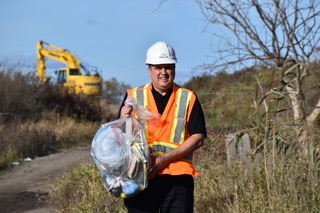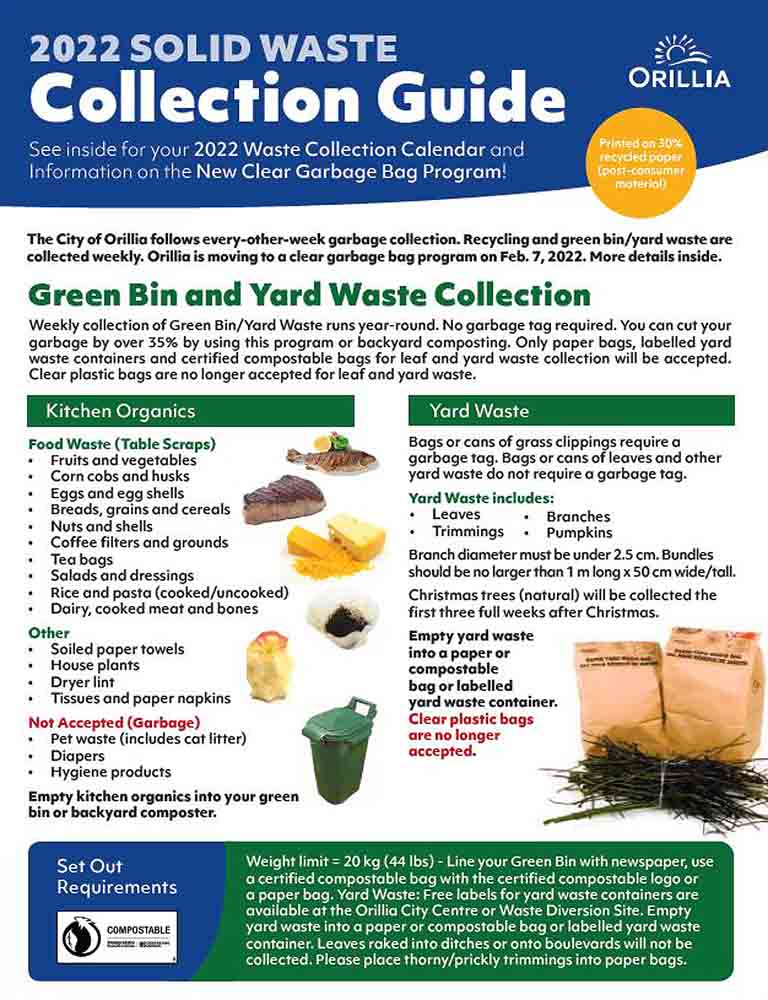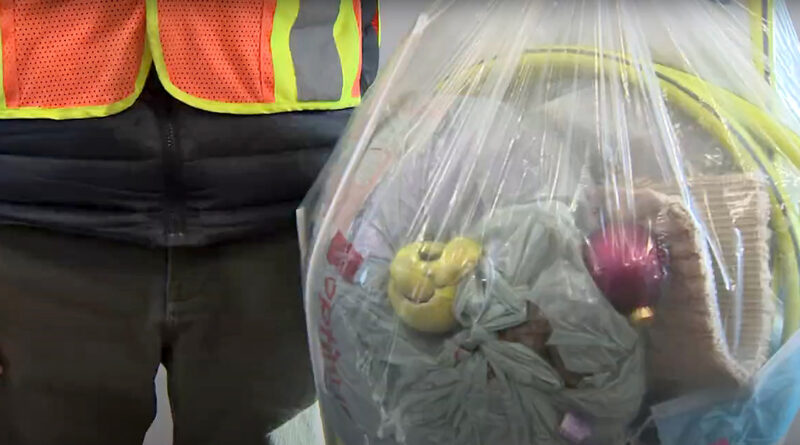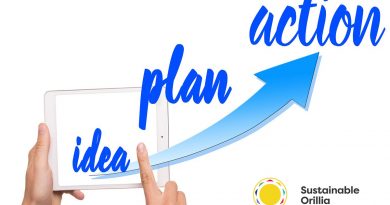Clear Garbage Bag Use Starts February 7
By Susanne Laperle – Special to SUNonline/Orillia
By now, most households and businesses in Orillia are aware February 7 the city is implementing clear bagging for household garbage. Simply put, instead of using the traditional green or black bags on February 7 we will be required to use clear bags for household garbage. Everything else remains the same.
The City provided considerable notice of the change and encouraged local retailers to stock up on clear plastic bags in four different sizes. Communications have been ongoing, and there’s a dedicated webpage describing the clear bag program in detail. The page includes background why the City is implementing clear bagging. It has a comprehensive Q&A section and a list advising residents and businesses where to buy clear garbage bag.
How we handle and ideally reduce our waste is a critical factor in achieving sustainability as a community. In 2020 waste management and diversion costs totaled over two million dollars, which after tag sales, tipping fees and other revenue sources were netted out, cost Orillia taxpayers close to a million and a half dollars. Waste management costs will certainly increase when the City has to find a new waste disposal option beyond its current landfill; hence it’s in our best interests to reduce those costs and the associated carbon emissions. There are two ways that we can contribute to reducing those numbers.
The first mirrors the clear bagging program’s objective – to reduce the amount of recyclable and compostable materials that go into our landfill. Greg Preston, Orillia’s manager of environmental services, emphasized this point in a recent discussion with Sustainable Orillia:

“Our current waste diversion rate hovers around 64%. We want, and need, to get it closer to our target of 75%. In doing this we will extend the life of our landfill site.” Preston adds, “Where clear bagging has been introduced there has been a noticeable increase in the diversion of recyclables and compostables. In Markham after several years of implementation they experienced an 11% overall increase to their waste diversion rate. If Orillia achieves similar results, we will realize the target diversion rate of 75%, plus reduce costs and prolong the life of our current landfill.”
The second thing individuals can do to help reduce materials going into landfill sites is to shop more sustainably. That means avoiding non-recyclable/non-compostable packaging. We can apply pressure on our favourite retailers and brands to accelerate their transition to compostable packaging. Some examples of non-recyclable packaging include the hard-plastic packaging that many cheeses and cold cuts come in. Also the stretch wrap and absorption pads used in meat packaging. Buying local, lining up at the deli counter and communicating your concerns to various manufacturers, are some ways we as individuals can help reduce this waste going into our local landfill.
The move to clear bagging is an extension of the City’s mandatory source separation recycling bylaw introduced in 2012. The bylaw requires residents to sort recyclables and compostable waste and put them out for collection separately from household garbage. Garbage bags having more than 30% of recyclable and compostable content can be left behind at the curb by the collectors. Now, with this move to clear garbage bags, the new allowable number is 10%, meaning garbage bags containing more than 10% recyclable or compostable materials will be left at the curb with a refusal sticker saying why the bag has been left behind.
Greg Preston answered three questions on some of the new and current guidelines for recycling, including:
1. How will the size of the two permissible ‘privacy’ bags be defined … how big would or could they be?
Privacy bags can be shopping bag size, up to the 25-litre kitchen bags many people use. He went on to say that residents using rigid garbage containers do not need to use a large clear bag with it unless they want to line the container – and they can still place up to two privacy bags in each container before tagging.
2. What about pet waste? Are those plastic newspaper sleeves permissible?
Pet waste represents close to 20% of the city’s waste every year. “Pet waste in the plastic sleeves or in compostable pet waste bags are considered garbage and can be put out in the clear bag,” Preston said. He also encourages pet owners to compost pet waste for their non-vegetable gardens as a better, more sustainable solution overall.
3. What can you do if your garbage is not collected?
“Hopefully, that won’t happen often. We know it may take some time for everyone to work through this change and our collection teams will use their judgement, particularly if a household is also recycling. When it does happen, the bag will be stickered explaining why it was left behind and it will be up to the resident then to either re-sort their garbage or bring it to the waste diversion site themselves where, if it’s tagged, there is no charge.”

Questions like these and more are, for the most part, answered in the City’s Solid Waste Collection Guide. It’s a comprehensive and easy-to-use guide. For questions that aren’t answered by either the Guide or the Q&A on the Clear Bag web-page, you can call the waste diversion site at 705-325-3522.
As you get ready to introduce clear bags into your household’s or business’s waste disposal routine, please keep in mind why this is such an important step. Support and adaption of clear bagging for your garbage will play a role in extending Orillia’s landfill capacity and, more importantly, you will contribute to reducing both the amount of waste we generate every year and the overall cost. Your support is essential and will be greatly appreciated by future generations.
(Images Supplied)



